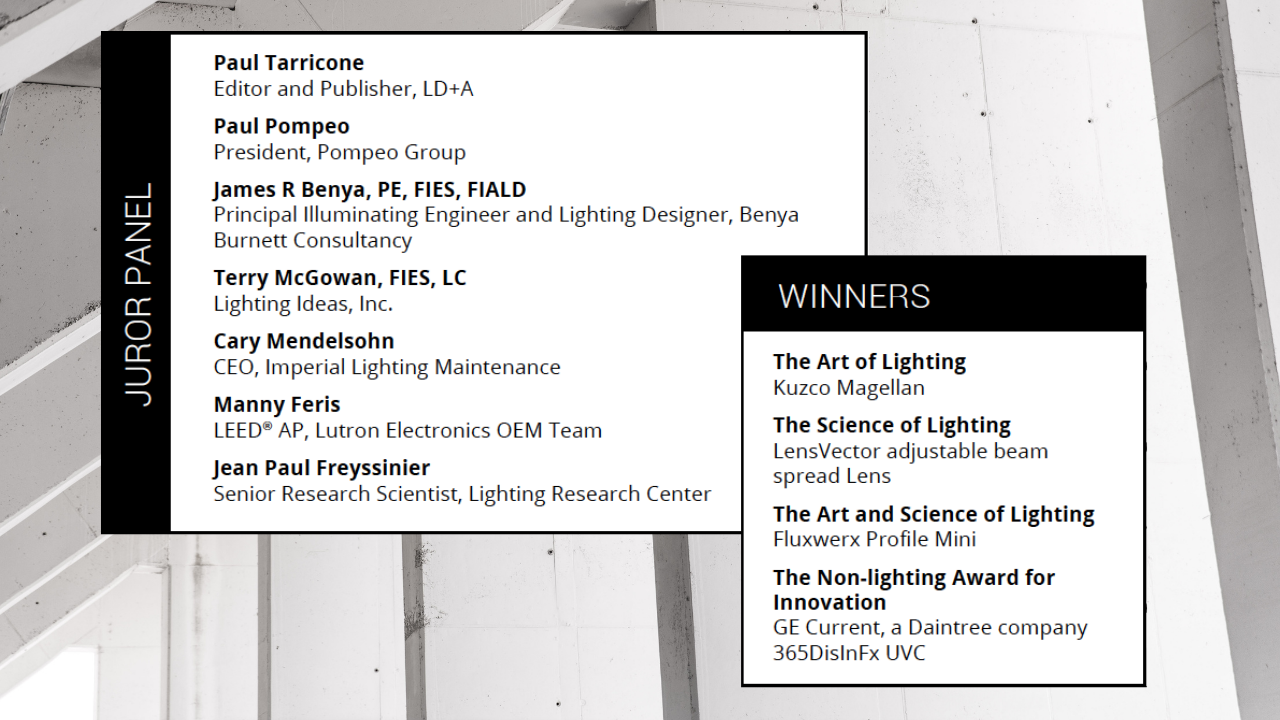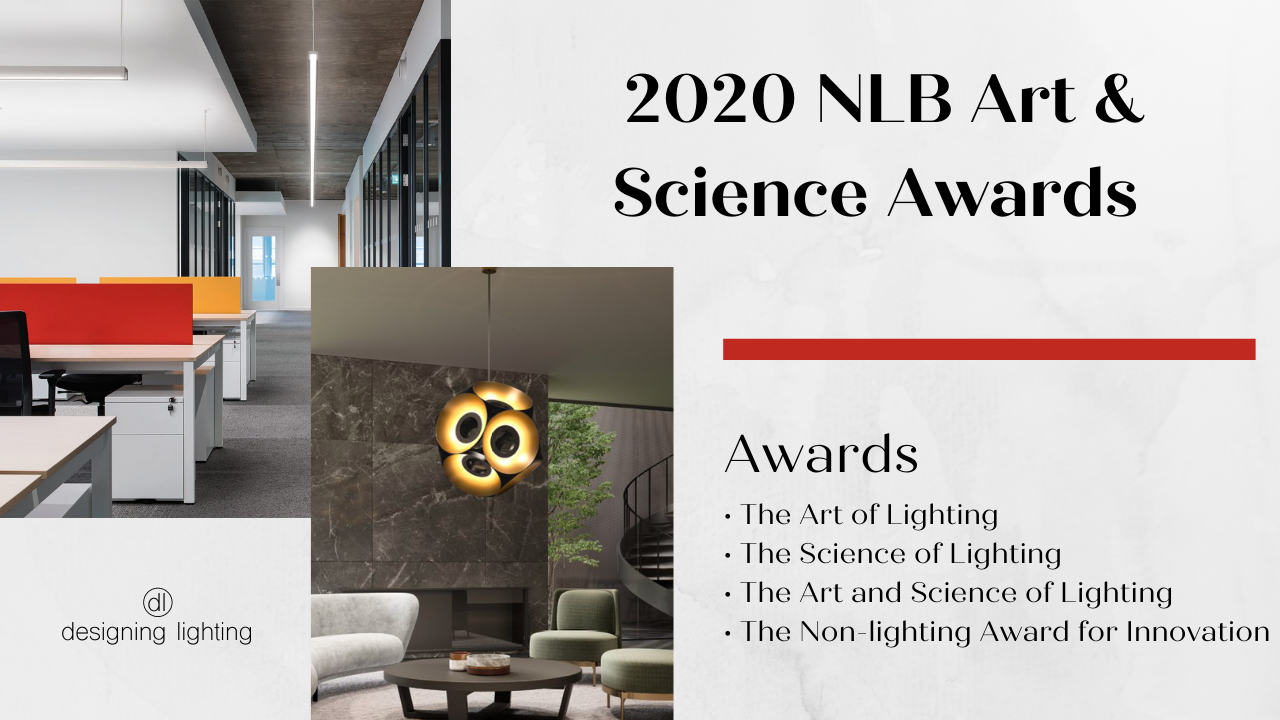I happen to think that awards are a particularly good thing. There are now more lighting awards programs than ever before, for everything from lighting design project awards to awards for lighting products of every category. The project awards, especially IALD’s International Lighting Design Awards and the IES Illumination Awards, are of great interest to the entire lighting community because, in addition to crediting the designers, project awards provide an opportunity to recognize a number of products that played key roles. Being a lighting designer, designing and receiving these awards were among the most important aspects of my practice.
On the other hand, among manufacturers, lighting product awards programs are their Academy Awards. There are so many different categories and varieties, and I find it hard to choose between a downlight and a table lamp. Sort of like a dog show, where Best in Show could be any breed and choosing the schnauzer instead of the Great Dane might be hard to reconcile. Nonetheless, Mary Beth Gotti of the National Lighting Bureau, longtime manager of the GE Edison Awards program, created a new type of product awards program – the Art and Science Awards with the distinctive title from Manny Feris of Lutron. The judging committee compiled the 2020 candidate slate primarily by reviewing other product award programs and soliciting input from designers and other lighting industry professionals Competing new products would be judged for their innovation in the Art of Lighting, the Science of Lighting, or both. Most importantly, the judging criteria gave the jurors considerable latitude in how they ranked products.
In judging an awards program, nothing beats having a diverse juror panel. This panel included me and six other senior members of the industry from all corners of the industry. It was weird to be the only lighting designer on a lighting jury. I am drawn by my nature to the appearance and the presentation of the products, and much to my chagrin, several jurors did not agree with my assessments of style! Of course, I did not always agree with them on what inspired their selections either, so unlike being among lighting designers, this was different – and interesting – and a real challenge.

I think we sort of decided that there was to be no one “best of show” product. Like the dog show, choosing among breeds seems unfair and maybe even prejudicial. But in the end, we were able to come up with four categories that made sense:
- The Art of Lighting
- The Science of Lighting
- The Art and Science of Lighting
- The Non-lighting Award for Innovation

The Art of Lighting winning product is the Kuzco Magellan, a large, decorative pendant light with an extraordinary contemporary appearance. Judging decorative lighting is hard – twice in articles I have called decorative lighting “the jewelry of architecture”. This luminaire challenged me to think outside of my personal “box” and understand how other jurors saw it. The Magellan is not only a work of art; its light emitting efficiency and options make it capable of being the centerpiece of an extraordinary room.

Photo Credit: Kuzco Lighting

LensVector adjustable beam spread lens
The Science of Lighting was easier for me than other judges, I think. Lighting designers look for science to provide tools to solve difficult problems, and the LensVector adjustable beam spread lens with no moving parts is a dream come true. It uses a liquid crystal lens, the same technology as in the lens of a cellphone camera. Imagine not having to climb a ladder to change the beamspread of a display luminaire in a museum or store! Just dial in the new beamspread via Bluetooth or DMX. I had no problem convincing my fellow panelists of the breakthrough nature of this revolutionary product.

Fluxwerx Profile Mini
That was supposed to be it, but we were not satisfied. Too many great innovations were not recognized. So, we created two new categories and selected winners! In the category of Best Combination of Art and Science, we chose the Fluxwerx Profile Mini, a brilliant technical achievement in lighting and a great stylistic form for architectural ceilings. Sometimes the most elegant solutions look simple and like good architecture, easy. This is a breakthrough in its own right, combining sophisticated linear styling and detailing with an amazing optical system.

Photo Credit: Fluxwerx

Current by GE 365DisInFx UVC Ceiling Puck
Finally, we had to come to terms with the wave of UV sources and the many great efforts to integrate them into lighting. This touched off a debate about whether UV is lighting and the compromises necessary in lighting equipment to ensure that the UV radiation can be effective and safe. So the Non-Lighting Innovation Award went to the GE Current, a daintree Company 365DisInFx UVC Ceiling Puck. This was an especially tough category because the science and market are evolving so quickly and there were several competitors, and because it really was not about lighting. In the end, the quality of their science stood up and won for Current.
While the judging was at times chaotic and argumentative, the juror panel was unanimous in the end as we realized that we were voting in favor of coming trends in the industry. Each winner was more than just a pretty face or outstanding athlete – it was a profound directional change for how we look at and use lighting. I personally congratulate the winners and runners-up for their work and look forward to the party. And especially I want to congratulate and thank the National Lighting Bureau and Mary Beth Gotti for their creative and inspired effort to create a competition that awards thinking for the future of our industry.
This article originally appeared in the February issue of designing lighting




